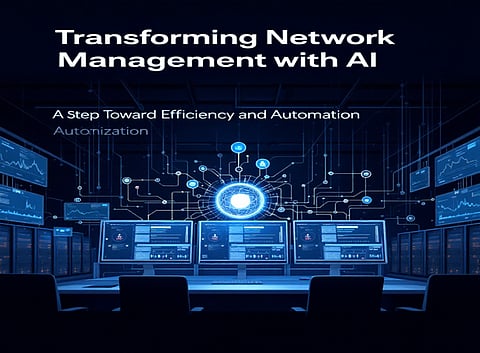

In the ever-evolving world of telecommunications, the integration of artificial intelligence (AI) agents into network management is a significant breakthrough. The technology promises not only enhanced operational capabilities but also offers innovative solutions for addressing complex network challenges. The research, presented by Venkatesh Cumbakonam Gokulraju, highlights the monumental impact of AI-driven systems in network service assurance, optimizing resources, reducing costs, and improving efficiency.
The AI-driven network management framework introduced in this research operates on a multi-layered architecture designed for scalability and high performance. At its core, containerized microservices running in Kubernetes clusters allow for optimized resource usage. The solution incorporates edge computing for immediate decision-making and utilizes cloud-based analytics for more intricate processes. This hybrid architecture enables seamless, high-throughput event processing with minimal latency—crucial for modern, mission-critical networks. By integrating AI at every layer, the system achieves better anomaly detection, fault management, and predictive maintenance, ensuring smooth and proactive operations.
One of the most pressing issues in network management is the growing complexity of infrastructures coupled with limited operational budgets. Traditional systems struggle to handle the increased volume of connected devices and changing standards. In response, AI systems automate routine network management tasks, significantly reducing the time needed to resolve issues. By leveraging advanced machine learning models, these AI agents not only assist in troubleshooting but also predict and resolve potential failures before they disrupt services, thus enhancing the overall efficiency of network operations.
A critical area where AI-driven solutions make a remarkable difference is in resource optimization. Traditional network management systems often face challenges related to inconsistent resource allocation, leading to underutilization or, conversely, overloading of systems. The AI-enhanced solution addresses these inefficiencies by automatically adjusting network configurations based on real-time data. With the help of AI agents, network systems can efficiently balance loads, allocate resources dynamically, and ensure optimal network performance at all times. This results in significant cost savings, improved energy efficiency, and reduced operational overheads.
Predictive maintenance, empowered by AI, is a game-changer for network management. Modern-day common maintenance implementations rely mostly on fixed schedules or reactive troubleshooting. In contrast, AI systems continuously monitor network performance and detect potential issues before they escalate into far-reaching failures. This proactive stance enhances the efficacies of maintenance strategies with the reduction of downtime, an increase in the lifetime of network components, and the optimization of the use of resources. The environment in data centers, for example, is monitored by AI in terms of airflow and temperature so as to avert overheating, which may spawn costly repair works and interruption of services.
The mix of edge computing and cloud computing makes the NOC highly optimized. Edge computing cells local decision-making, which is very important for putting latency minimizing priority into high-speed networks, because even milliseconds do count. On the other hand, things get comparatively complex with cloud analytics, such as go into data processing and training on models. This tradeoff of edge and cloud processing implies that the network can handle massive amounts of data with very little delay while a deep insight into cloud analytics can be provided. This approach thus lasts its entire system to be scalable, responsive, and able to perform well.
Going forward, network management is set to undergo major new advancements. The very presence of blockchain technology for agent coordination, of digital twins for simulation, and AI growing into a godly superpower, promises a revolution in the operation of networks. AI systems will thus ensure complete automation of network management, containing everything from troubleshooting and fault resolution to predictive maintenance, minimizing manual interference, and always striving for optimum network performance.
With evolving technologies, one can expect the network infrastructure to comprise ever more complex sensors and real-time data gathering mechanisms that work towards maximally assisting network operations. These developments shall also aid in realizing fully autonomous networks that are capable of keeping themselves up through self-healing and self-optimizing to handle ever-increasing demands of modern telecommunications.
In summary, as evidenced through the research carried out by Venkatesh Cumbakonam Gokulraju, adopting AI agents within network management frameworks is a considerable step forward, and allows for an unprecedented advantages in productivity, resource utilization, and predictive maintenance. The value of this approach is that the problems we face today in the telecommunications industry, are sequentially addressed, enabling a vision of future AI based systems that manage networks without human intervention, which will ultimately result in a more reliable and cost effective network. There is ongoing convergence of AI and the telecommunications industry that represents a tantalizing opportunity to further along the boundaries of network performance service improvement whilst reducing operational costs, and a sustainable network infrastructure for the future.
